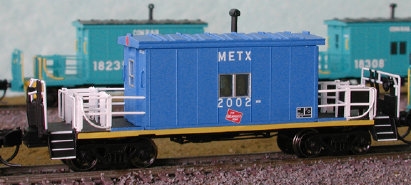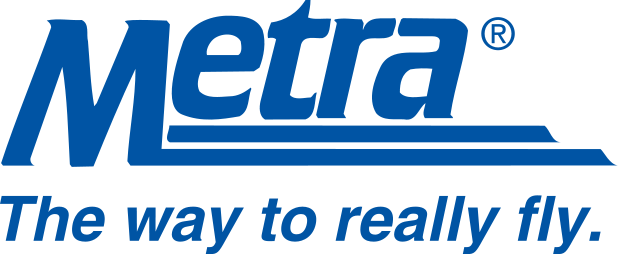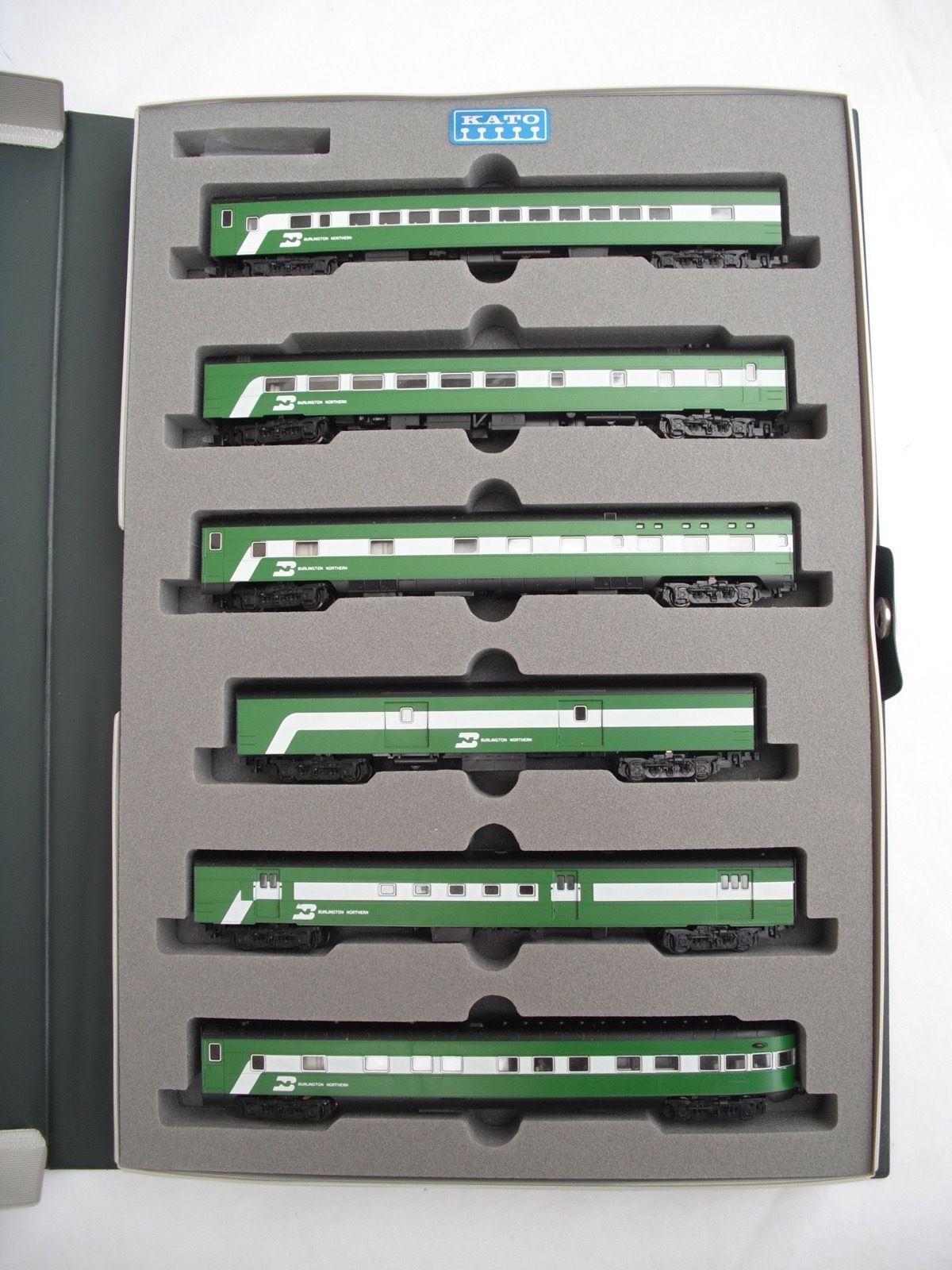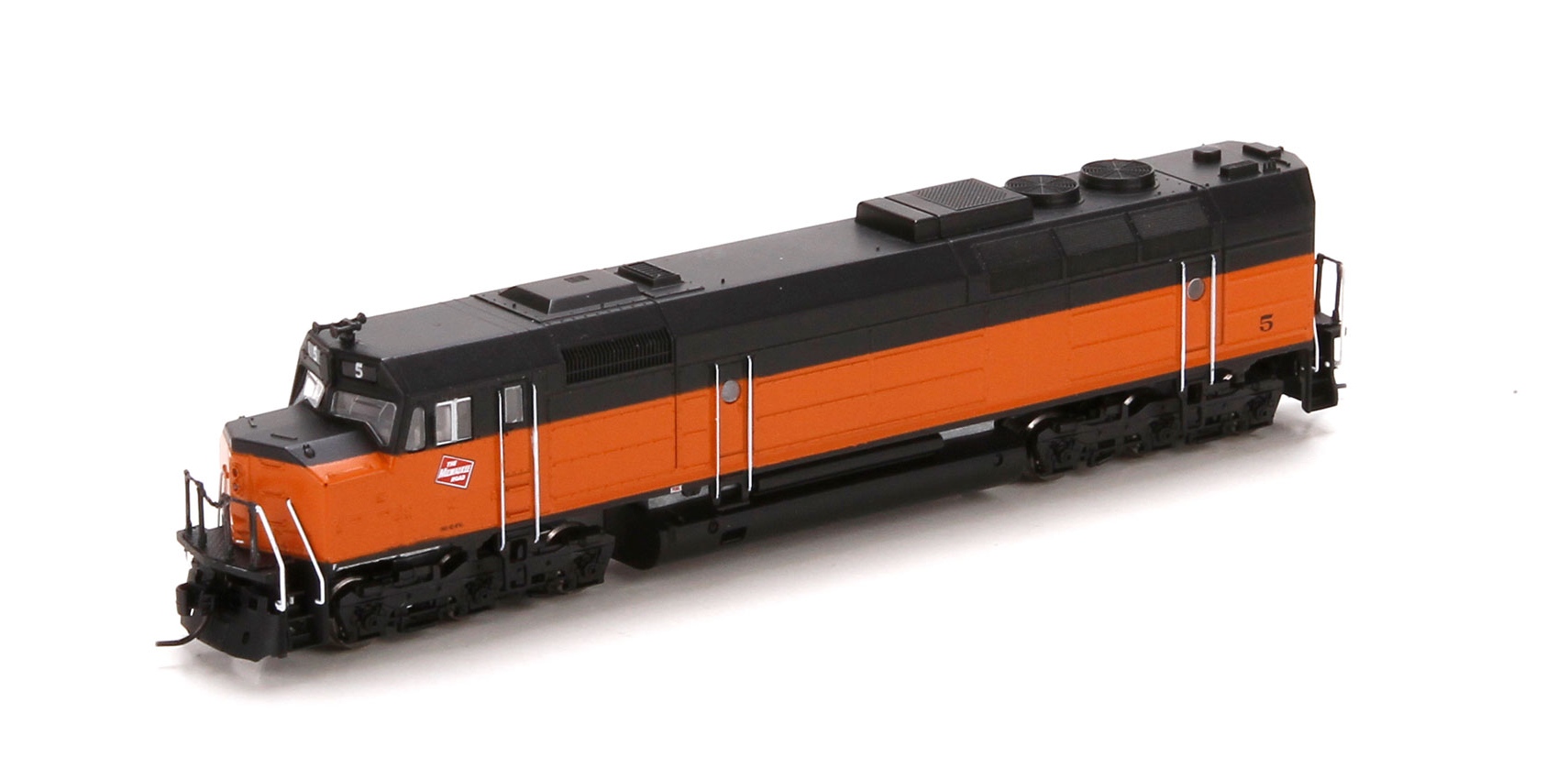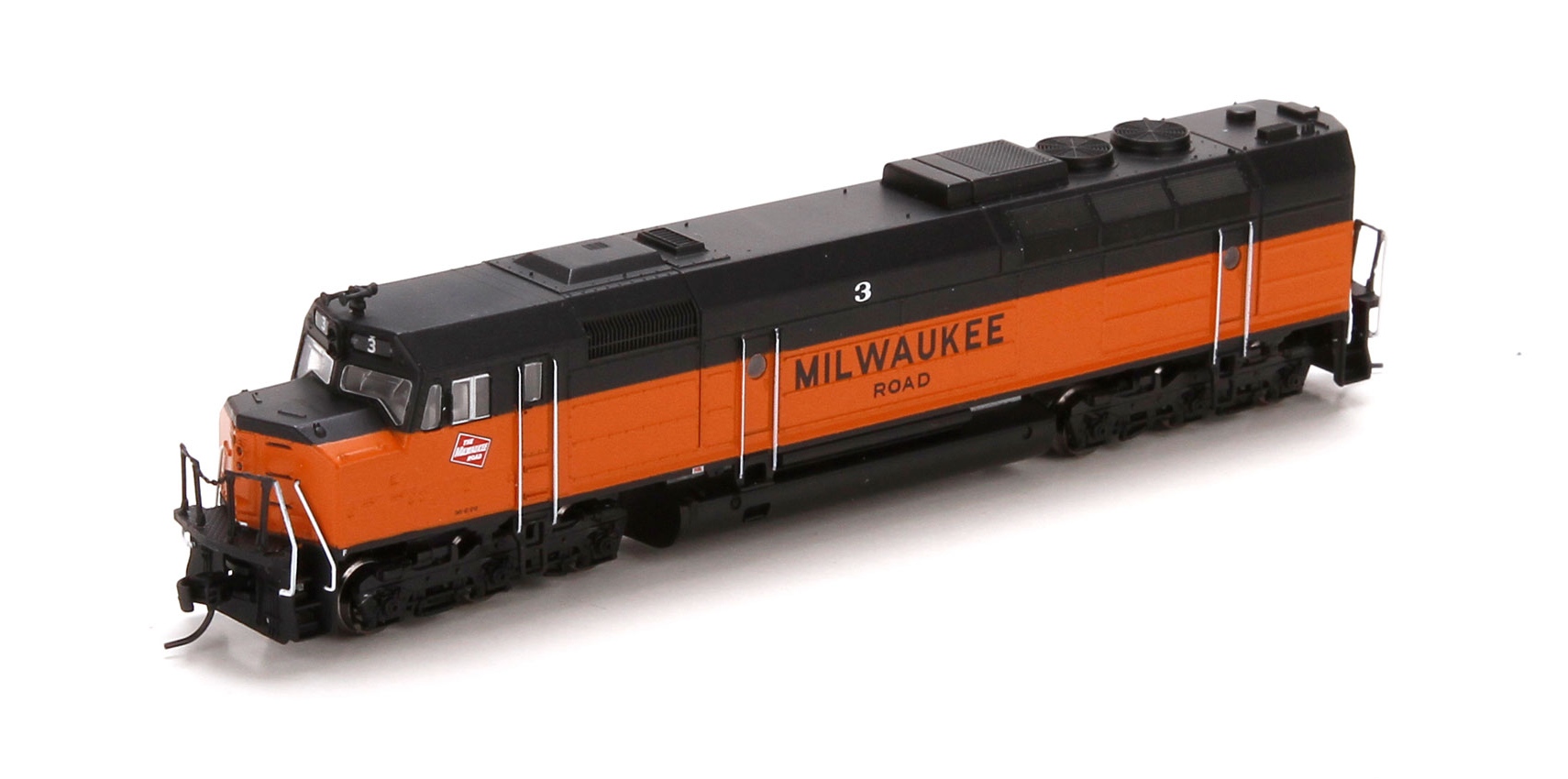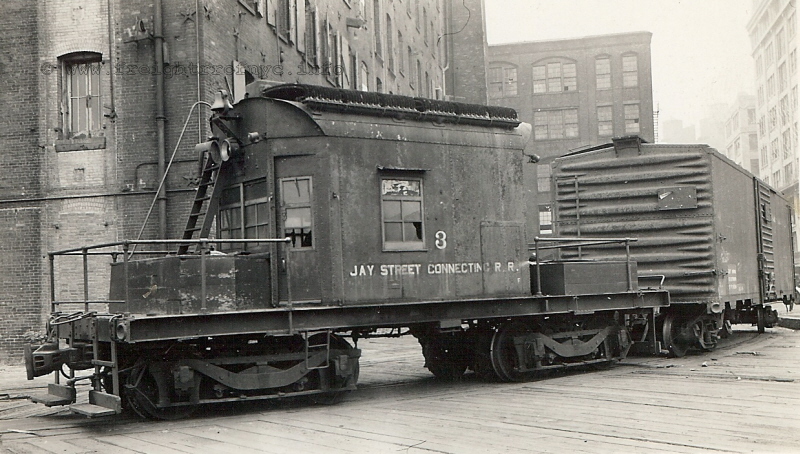Bluford Shops - 24170 - Caboose, Transfer - Chicago Metra - 2002
| Stock Number | 24170 |
| Original Retail Price | 36.95 |
| Brand | Bluford Shops |
| Manufacturer | Bluford |
| Body Style | Bluford Caboose Transfer |
| Prototype Vehicle | Caboose, Transfer (Details) |
| Road or Company Name | Chicago Metra (Details) |
| Reporting Marks | METX |
| Road or Reporting Number | 2002 |
| Paint Color(s) | Blue and White |
| Coupler Type | Generic Magnetic Knuckle |
| Wheel Type | Chemically Blackened Metal |
| Wheel Profile | Small Flange (Low Profile) |
| Release Date | 2015-11-01 |
| Item Category | Rolling Stock (Freight) |
| Model Type | Caboose |
| Model Subtype | Transfer |
| Model Variety | Transfer |
| Prototype Region | North America |
| Prototype Era | NA Era II: Late Steam (1901 - 1938) |
| Scale | 1/160 |
| Track Gauge | N standard |
Model Information:
This model features: Fox Valley Metal wheels and
Wire grabs and cut levers.
This short body bay window caboose design was developed by International Car and MoPac in the 1970s. Several other railroads used very similar cars. These were assigned to road service and were NOT transfer cabooses.
This short body bay window caboose design was developed by International Car and MoPac in the 1970s. Several other railroads used very similar cars. These were assigned to road service and were NOT transfer cabooses.
Prototype History:
A transfer caboose looks more like a flat car with a shed bolted to the middle of it than it does a standard caboose. It is used in transfer service between rail yards or short switching runs, and as such, lacks sleeping, cooking or restroom facilities. The ends of a transfer caboose are left open, with safety railings surrounding the area between the crew compartment and the end of the car.
A recent variation on the transfer caboose is the "pushing" or "shoving" platform. It can be any railcar where a brakeman can safely ride for some distance to help the engineer with visibility at the other end of the train. Flatcars and covered hoppers have been used for this purpose, but often the pushing platform is a caboose that has had its windows covered and welded shut and permanently locked doors. CSX uses former Louisville & Nashville short bay window cabooses and former Conrail waycars as pushing platforms.
From Wikipedia
A recent variation on the transfer caboose is the "pushing" or "shoving" platform. It can be any railcar where a brakeman can safely ride for some distance to help the engineer with visibility at the other end of the train. Flatcars and covered hoppers have been used for this purpose, but often the pushing platform is a caboose that has had its windows covered and welded shut and permanently locked doors. CSX uses former Louisville & Nashville short bay window cabooses and former Conrail waycars as pushing platforms.
From Wikipedia
Road Name History:
Metra (reporting mark METX) is a commuter railroad in the Chicago metropolitan area. The railroad operates 241 stations on 11 different rail lines. It is the fourth busiest commuter rail system in the United States by ridership and the largest and busiest commuter rail system outside the New York City metropolitan area. There were 83.4 million passenger rides in 2014, up 1.3% from the previous year. The busiest day for Metra ridership occurred on June 11, 2010?the day of the Chicago Blackhawks 2010 Stanley Cup victory rally?with over 429,000 passengers.
Using Chicago's rail infrastructure, much of which was created in the 19th century, the Illinois General Assembly established the RTA, and later Metra, to serve commuters by rail. Metra's creation was a result of the anticipated failure of commuter service operated and owned by various private railroad companies in the 1970s. Freight rail companies still operate some routes; however, these operations are guided by contracted service agreements. Metra owns all rolling stock and is responsible for all stations along with the respective municipalities. Since its inception, Metra has directed more than $5 billion into the commuter rail system of the Chicago metropolitan area.
From Wikipedia
Using Chicago's rail infrastructure, much of which was created in the 19th century, the Illinois General Assembly established the RTA, and later Metra, to serve commuters by rail. Metra's creation was a result of the anticipated failure of commuter service operated and owned by various private railroad companies in the 1970s. Freight rail companies still operate some routes; however, these operations are guided by contracted service agreements. Metra owns all rolling stock and is responsible for all stations along with the respective municipalities. Since its inception, Metra has directed more than $5 billion into the commuter rail system of the Chicago metropolitan area.
From Wikipedia
Brand/Importer Information:
Bluford Shops began in 2007 as a side project of two model railroad industry veterans, Craig Ross and Steve Rodgers. They saw a gap between road names available on N scale locomotives but not available on cabooses. They commissioned special runs of Atlas cabooses in Atlantic Coast Line, Central of Georgia, Monon, Boston & Maine and Southern plus runs on Grand Trunk Western and Central Vermont on the MDC wooden cabooses. While these were in process, they began to develop their first all new tooling project, 86' Auto Parts Boxcars in double door and quad door editions in N scale. By January of 2008, Bluford Shops became a full time venture. Along with additional N scale freight cars and their own tooling for new cabooses, they have brought their own caboose line to HO scale. They also have their popular Cornfields in both HO and N. The future looks bright as they continue to develop new products for your railroad.
The town of Bluford in southern Illinois featured a small yard on Illinois Central's Edgewood Cutoff (currently part of CN.) The yard included a roundhouse, concrete coaling tower (which still stands) and large ice house. Reefer trains running between the Gulf Coast and Chicago were re-iced in Bluford. Things are more quiet now in Bluford with the remaining tracks in the yard used to stage hoppers for mines to the south and store covered hoppers. Intersecting the IC line in Bluford is Southern Railway's (currently NS) line between Louisville and St. Louis. Traffic on this single track line remains relatively heavy.
The town of Bluford in southern Illinois featured a small yard on Illinois Central's Edgewood Cutoff (currently part of CN.) The yard included a roundhouse, concrete coaling tower (which still stands) and large ice house. Reefer trains running between the Gulf Coast and Chicago were re-iced in Bluford. Things are more quiet now in Bluford with the remaining tracks in the yard used to stage hoppers for mines to the south and store covered hoppers. Intersecting the IC line in Bluford is Southern Railway's (currently NS) line between Louisville and St. Louis. Traffic on this single track line remains relatively heavy.
Item created by: gdm
on 2016-02-08 12:51:46
Last edited by: gdm on 2021-03-03 17:04:51
If you see errors or missing data in this entry, please feel free to log in and edit it. Anyone with a Gmail account can log in instantly.
Last edited by: gdm on 2021-03-03 17:04:51
If you see errors or missing data in this entry, please feel free to log in and edit it. Anyone with a Gmail account can log in instantly.


